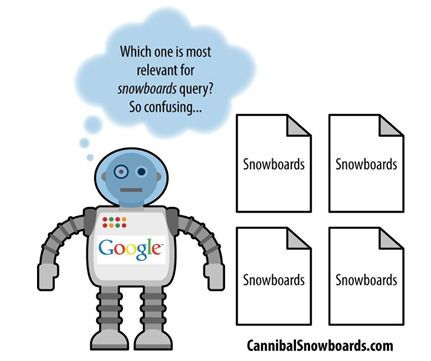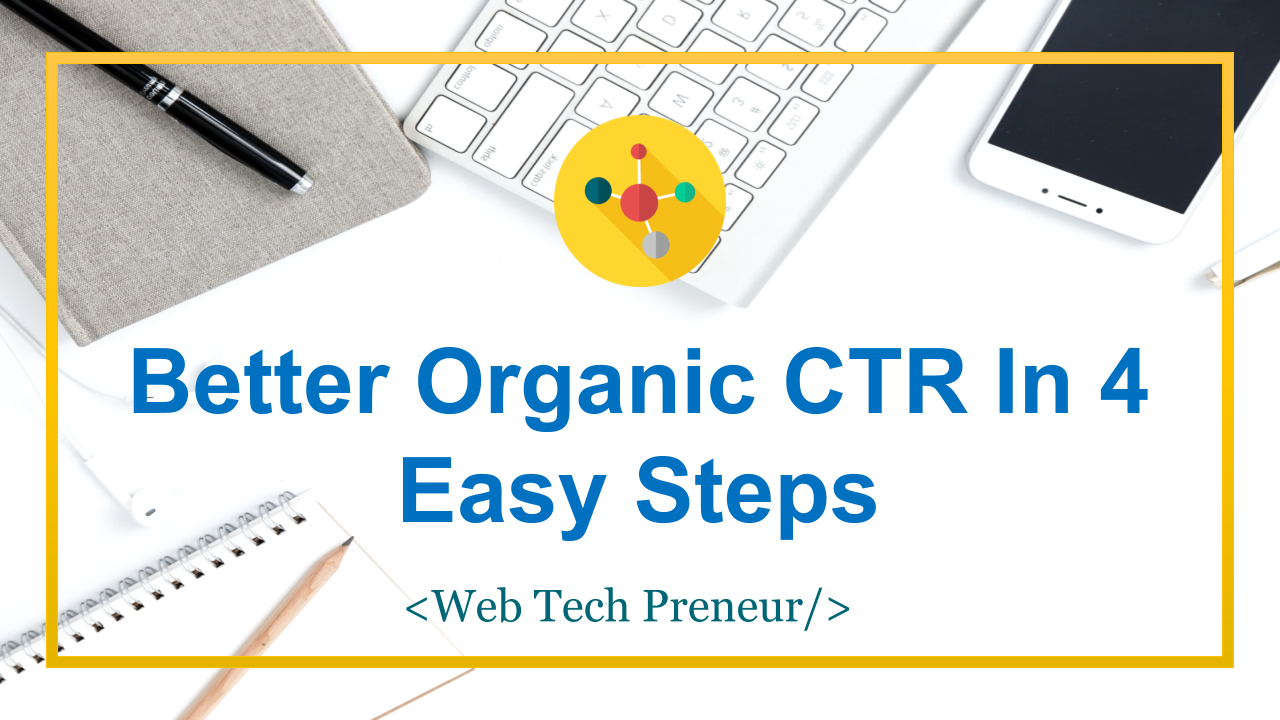Better Organic Click Through Rate In 4 Easy Steps
What is Click through Rate and why should you try and improve it?
If you have ever run an ad campaign, you probably know that click through rate is an important metric. Similarly, getting a website to rank higher on the search engine results page is an accomplishment but it is just half of the battle.
The next step is to get people to actually follow through with a click.
This type of metric is called an organic click through rate or organic CTR, as it relates to organic traffic. And today we will discuss exactly what organic CTR is and how it impacts your conversion rates.
More importantly, we will also look into how to improve it for better performance, increased Google rankings, and an overall boost in your online presence.
Enjoy!
[toc]
What is the organic click through rate?
As briefly explained above, CTR refers to the number of people, who upon encountering an ad or a website, decide to click on it. Hence, a higher click through rate means that the ad or the website are garnering a higher level of attention.
But, in the context of ads, the CTR is paid, while organic CTR refers to organic search engine results. Thus, the organic click through rate can be visualized as the following formula:
organic click through rate = organic clicks / impressions
The word “impressions” is used to more concisely describe the number of times the website is seen on the search engine results page (SERP).
As such, the organic click through rate is majorly influenced by the occupied spot in the search engine ranking.
But there are also additional aspects to consider, such as the URL and the meta description of the result itself.
Why improve your organic click through rate?
So, what is the importance of organic CTR in particular? Considering the previously mentioned interrelation of organic CTR and the search engine ranking, it is not hard to see the former’s value.
There are concrete indications that search engines such as Google, strongly consider metrics like the organic click through rate, when ranking the websites.
Simply put, the organic CTR shows Google and similar search engines how attractive, or unattractive your website and content are.
By this, CTR shows that your website is a reliable source of information, which users trust, and want to read. Consequently, this increases your credibility and authority in the search engine’s eyes as well.
This leads us to another major impact of the organic CTR, related, or rather created by the previous one, the website traffic. A higher organic click through rate leads to an increase in traffic, meaning a larger number of people visiting the website.
In turn, the higher level of traffic will usually boost brand awareness and thus allows for a better reach of the target audience.
As you can see, better organic click through rates create a cycle of popularity and increased movement on your website, which betters Google’s perspective of you and your value to users.
Consequently, the significance of organic CTR cannot be denied. Especially considering that one of the main goals of any digital marketing strategy is to garner enough user interest so that they would feel compelled to check out the website and potentially be converted into customers.
How to improve organic CTR?
Now that we have solidified the importance of click through rate, let’s explore some of the methods, which can be used to enhance it.
1. Consider the relationship between keywords and content
The relevancy of the content appearing on search results when certain keywords are used can definitely prompt a higher or lower level of CTR.
Finding out which keywords prompt the users to click on the website the most and making modifications accordingly can greatly improve the performance.
Furthermore, it can decrease the bounce rate, meaning that if the content matches with the expectation the keyword has created for the users, they are more likely to stay and engage with the website for longer.
Here, long-tail keywords, which are longer and more specific, can be of assistance as they are not as competitive in terms of search engine ranking.

The information concerning keywords can be collected by using Google Analytics, specifically under Traffic Sources and Search Engine Optimization. The latter presents multiple options, but Query and Landing Pages might be the most relevant in this case.
They, respectively, showcase the keywords which brought users to the website and the URLs, which appeared to them after the action of clicking was performed.
2. Avoid being your own competition
Continuing on the topic of keywords, there is a prominent issue to be avoided – keyword cannibalism. This slightly alarming expression simply refers to the situation when several pages are aiming to target similar keywords, all while being connected to the same website.
Essentially, this means that the website is competing with itself within the search engine ranking, as Google tends to present only 1-2 results from the same domain in response to a specific query.
This can have a direct impact on click through rate as it gets spread across multiple posts, all of which will probably receive a lower ranking.

In order to combat this issue, the content needs to be continuously reviewed and its performance analyzed. Similar articles can be combined and the posts with greater value should be linked to from less important ones – and not vice versa.
This can assist Google with determining which of the articles the website wants to rank higher.
3. Use ‘click-turning’ headlines
A headline plays a key role in capturing a person’s attention and inspiring them to click on the website. There are various ways to make it more enticing.
But it is advised that it should always be specific and reflect the value of the webpage aka be utilizing the right, as you probably guessed, keywords.
Adding things like numbers as well as emotional touches, have also proven to prompt a higher number of clicking. However, this should be done in a subtle way, rather than becoming clickbaity.
While clickbait can initially lead to an increase in click through rate, the dissonance between the headline and the content might make the user leave the website fast, leading to a high bounce rate and a negative impact on the search engine ranking.
4. Be thorough
In order to further evaluate how clickable is the website as a result, the appearing search snippet should be looked at more closely. A result snippet is the data Google shows the user as a result of their search, containing the title tag, meta description, and the URL.
For example, if you search the term ‘hot chocolate’ on Google, a normal snippet would look something like this:

However, there are also results called ‘rich snippets’, which contain more information. For the keyword ‘hot chocolate’ it could look like this:

Arguably, the rich snippet is more eye-catching and provides additional information, which has the potential to increase the CTR as the user can see in greater detail if the website matches their query. Even so, the opposite could also happen, meaning the user could be deterred if they don’t find the information relevant.
Furthermore, in some cases, if the snippet reveals too much, the user might end up not clicking on the website as they will see the answer from the snippet. That is why, once again, it is important to look at the relationship between keywords and content as well as the snippets.
How to create rich snippets?
Google is able to showcase a rich snippet for a website if it includes structured data as opposed to just meta description. Meta description tag in HTML is used to summarize the website’s content.
But, structured data is specifically formatted code, written in a way that it makes the website more readable for the search engine and allows it to create a rich snippet.
Adding structured data to a website can seem complex, its positive impact can be worth it as it helps to make a website more distinguishable from other search results and can be an additional way to reach the relevant users.
The meta description tag as well as the URL of the website are also important aspects to look into. They can both directly influence click through rate as meta description serves as a promotional copy of the website.
Conversely, results with shorter URLs tend to rank higher and be more clickable.
To sum up
Organic click through rates is an important metric when it comes to SEO as it is interrelated with both search engine ranking as well as traffic.
In order to improve the CTR, it is important to put yourself in the user’s shoes and look at the website’s search result through their eyes.
What kind of keywords make sense with the content the website provides? Does the title evoke emotion and call to action? Is the search snippet revealing the right kind of information?
Along with these questions, it is also principal to evaluate the users’ experience once they actually click on the result and enter the website. It should be engaging and comfortable to maneuver.
Not losing focus of the user and keeping up to date with the changes in the search engine’s behavior, are keys to successful digital marketing.


Comments are closed.